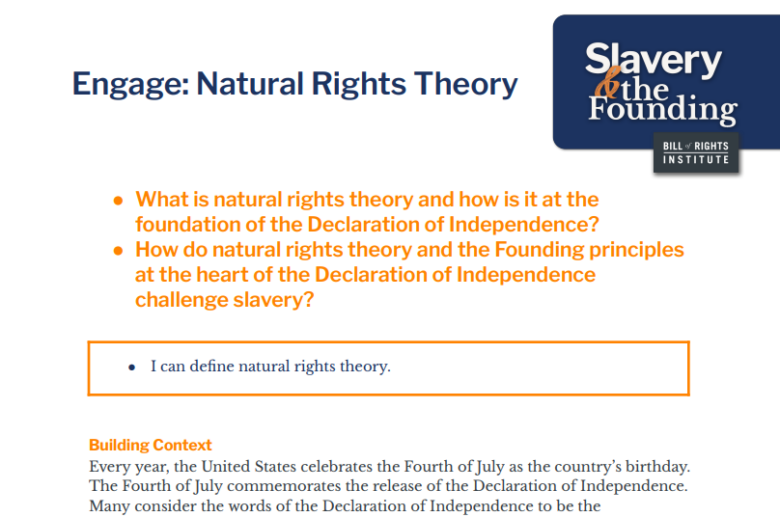Engage: Natural Rights Theory
What is natural rights theory and how is it at the foundation of the Declaration of Independence? How do natural rights theory and the Founding principles at the heart of the Declaration of Independence challenge slavery?
- I can define natural rights theory.
Building Context
Every year, the United States celebrates the Fourth of July as the country’s birthday. The Fourth of July commemorates the release of the Declaration of Independence. Many consider the words of the Declaration of Independence to be the philosophical foundation of the American republic. The Declaration contains three sections: An introduction or preamble, a list of complaints against the British king, and a declaration of independence from Great Britain. Taken together, these three sections make an argument for why the colonies want to break away from the British Empire. The Declaration’s preamble contains a general statement of natural rights theory and the purpose of government. Natural rights theory is the idea that all people are born with certain rights. These rights are “natural” or a part of human nature and should be recognized as the foundation of any government. The Declaration then makes the claim that all men (all humans) are created equal. Humans are equal in their natural rights and dignity, or inherent worth. This moral claim on equality of rights is essential to the Declaration. All humans, by virtue of being human, have natural rights. Because these rights are part of the natural order of all humans, they should be protected by a government based upon consent. The Declaration then lists a couple of those natural rights: Life, liberty, and the pursuit of happiness.
So what?
Define natural rights theory in your own words or create an illustration that captures the meaning of this term.



